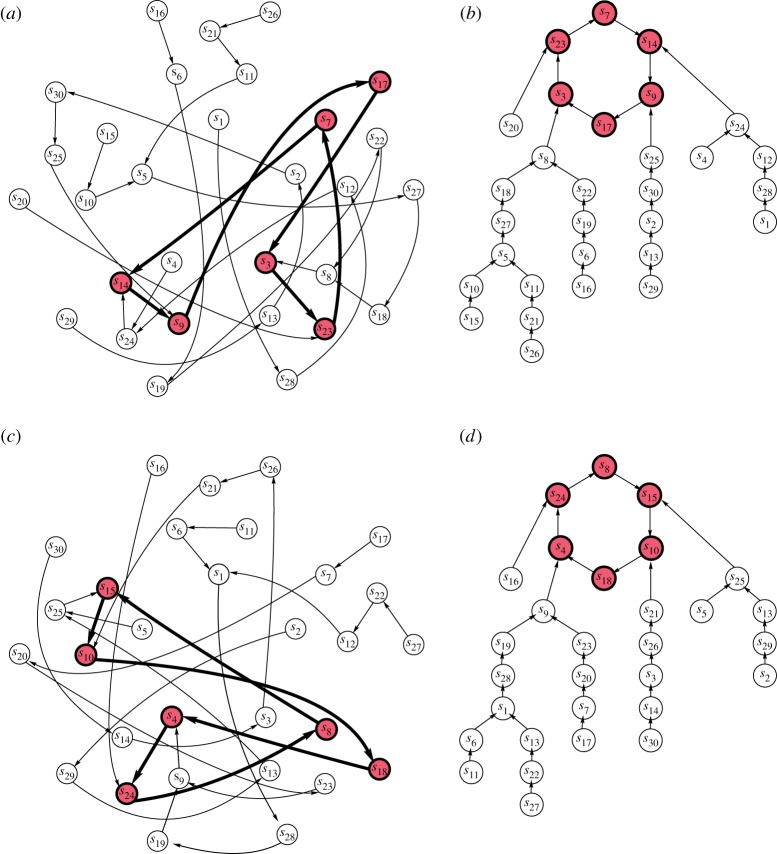Figure 3.
The application of a constant stimulus to node 1 (a) and node 2 (c) specifies active links in the hypernetwork; thus this reduced hypernetwork governs transitions until node 1 (respectively, node 2) remains under the stimulus. In both cases, all the trajectories come to cycles of six cluster states shown by red (grey) circles. The same reduced hypernetworks can be presented in an untangled way (b,d). (Online version in colour.)

